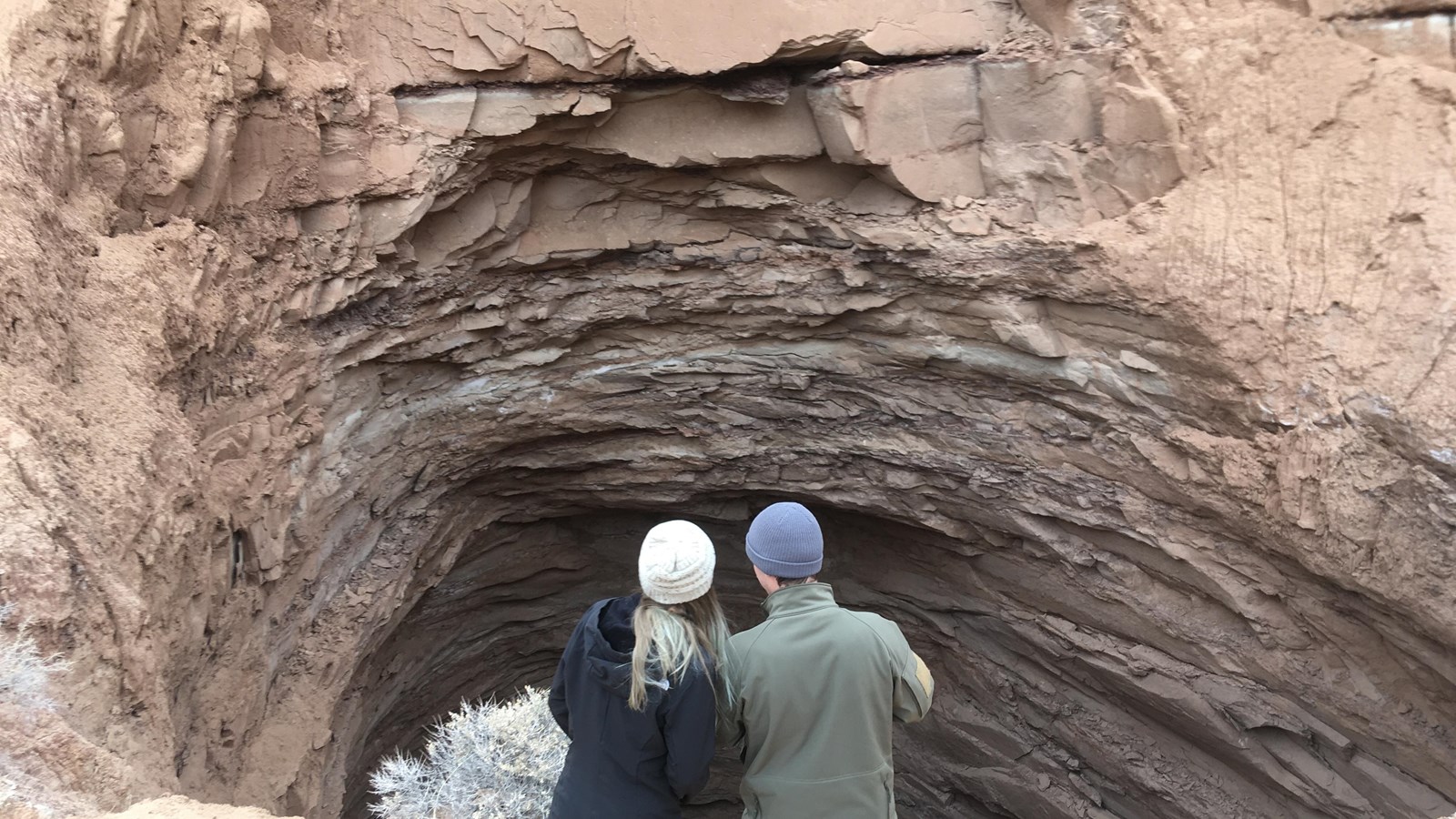Last updated: October 10, 2024
Place
Gypsum Sinkhole

NPS/ L. Ehler
Parking - Auto, Scenic View/Photo Spot
Access to the Gypsum Sinkhole requires a high clearance vehicle. Call 435-425-3791, press 1 for more information, and 4 for road conditions before visiting. Visit the Cathedral Valley page for more information and check the forecast. The roads through Cathedral Valley can become impassable when wet.
Stay away from the edge of the Gypsum Sinkhole. The rocks here are very soft and unstable, and can collapse at any time.
Geology
The Gypsum Sinkhole was formed when groundwater dissolved a buried gypsum plug. The cavity left behind has collapsed under the weight of overlying rock layers. This collapse has created a large sinkhole nearly 50 feet (15 m) in diameter and 200 feet (61 m) deep.
Gypsum is a common mineral found in the sedimentary rocks of this area. According to the Utah Geological Survey, "the gypsum was deposited from evaporating seawater approximately 165 million years ago (upper part of the Middle Jurassic Carmel Formation). After deposition and burial under subsequent layers of sediment, the low-density gypsum moved slowly upward along faults or fractures."
Learn more about the geology of Cathedral Valley and Capitol Reef's Waterpocket Fold.
Regulations
- While Capitol Reef is open 24 hours/day, car camping is limited to maintained campgrounds.
- Leave no trace of your visit. Vandalism is illegal.
- Drones are prohibited.
- Be a good B.A.R.K. ranger with your pet.
